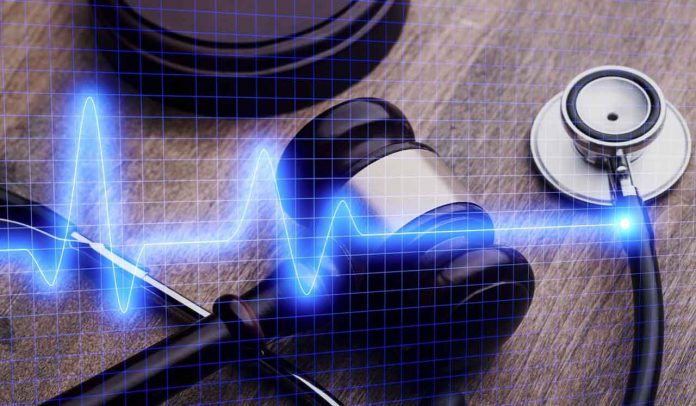Most of us, throughout our lives, will visit many different medical professionals: doctors, nurses, dentists and pharmacists, to name just a few. As with all things in life, sometimes medical professionals can make mistakes, and things don’t go according to plan. Unfortunately, if something goes wrong with your medical care, it can have severe implications for our health.
Here are some of the reasons that you may have a case for taking legal action against an individual or organization if something goes wrong with your treatment.
What Is Negligence?
Negligence can only occur when a medical professional or organization has a duty of care to you. Harm does not necessarily need to happen for them to be negligent – but it does need to occur for you to be able to make a claim against them for malpractice.
In general terms, negligence occurs when a medical professional or organization deviates from usual practice – the standard of care. This could be a small mistake with little or no repercussion to your overall health or something significantly more severe.
What Is Malpractice?
Malpractice occurs when an injury is caused due to a professional or organization’s negligence. This could be a worsening of a condition, complications or a requirement for further treatment that would have otherwise been unnecessary. A combination of injury and negligence from your medical care have to exist for a successful claim to be made.
Examples Of Medical Malpractice
There are many things that could constitute medical malpractice. Surgical errors are one of the most widely known, such as leaving tools or implements inside the body or causing avoidable damage during surgery.
Misdiagnosis leading to unnecessary medical procedures and treatment is another well-known form of medical malpractice. An example of this is misdiagnosing cancer, leading to unnecessary and damaging treatments such as chemotherapy.
Misreading scans and test results can also lead to cases of medical malpractice.
Statute Of Limitations
The Statute of Limitations differs from state to state when it comes to bringing a case for medical negligence. The Statute of Limitations is the legal period of time that you can bring a lawsuit. This is usually around two to three years from the date that the malpractice occurred. Therefore, it is essential that you speak to a legal representative as soon as possible if you feel you may have a case for medical negligence.
How To Tell If You Have Been Treated Negligently
The duty to prove negligence is on the patient in cases of medical negligence. This will need to be done with the help of medical negligence attorneys, who will be able to review your case and give you advice on whether you have a case. You will need to request access to all of your medical files and charts and provide these to a lawyer who can evaluate whether your care was negligent, and if so, whether you may have a chance to claim compensation.
A bad outcome is not the same as negligence. It is also worth noting that medical litigation can be time-consuming, stressful and expensive – and a win is by no means guaranteed. You should take advice from legal representation and think carefully before deciding to go ahead with any litigation.
Drugs And Medications
You may have a case if you have taken any medications that are later found to cause medical problems that you may not have developed otherwise. Medicines in the US are regulated by the Food and Drug Administration (FDA), so to have a case, you will usually need them to rule that the drug you have taken is dangerous to an unacceptable degree.
An excellent example of this is the cases of cancer in people that have taken a common heartburn drug called Zantac. Zantac lawsuits are currently in the process of moving through the courts in the US, and it has been found that the levels of a cancer-causing chemical in this drug are unacceptably high.
What Damages Can You Expect?
The amount of compensation or damages you can expect to receive depends on the level of harm that has occurred. There are two elements to damages: compensatory and punitive.
Compensatory damages aim to help put you back to a position you would have been in had the malpractice not occurred. This can include compensation for loss of earnings and ongoing medical expenses. There can be additional damages paid out for physical and psychological harm, such as if a patient loses a limb or becomes paralyzed by medical negligence.
Punitive damages are a form of punishment towards the medical professional or organization. These can usually only be received if the negligence was malicious or deliberate. Not all states have punitive damages, and obtaining them is rare.
How You Can Reduce The Risk Of Medical Negligence Occurring
It can be challenging as a patient to try to ensure that negligence does not occur in your case. The medical professionals are just that – professionals. When going to a hospital or practice, you usually enter assuming that those around you know what they are doing, and for the most part, this is the case.
You can help mitigate the risk of something going wrong by asking a lot of questions and requesting that your doctor talk you through their diagnosis and treatment options thoroughly. Another way is to always ask for a second opinion, particularly when the diagnosis or treatment is significant.
Final Thoughts
Medical malpractice is a complex and challenging area of the law. If you are concerned that you may have been a victim of medical malpractice, the first thing you should do is consult an experienced medical malpractice lawyer. Many lawyers will give you a free first consult to determine whether you have a case or not.
It would help if you also were cautious when deciding whether to go ahead with a claim. The process can be lengthy and cause serious stress and disruption to your life, and may not always be successful.







